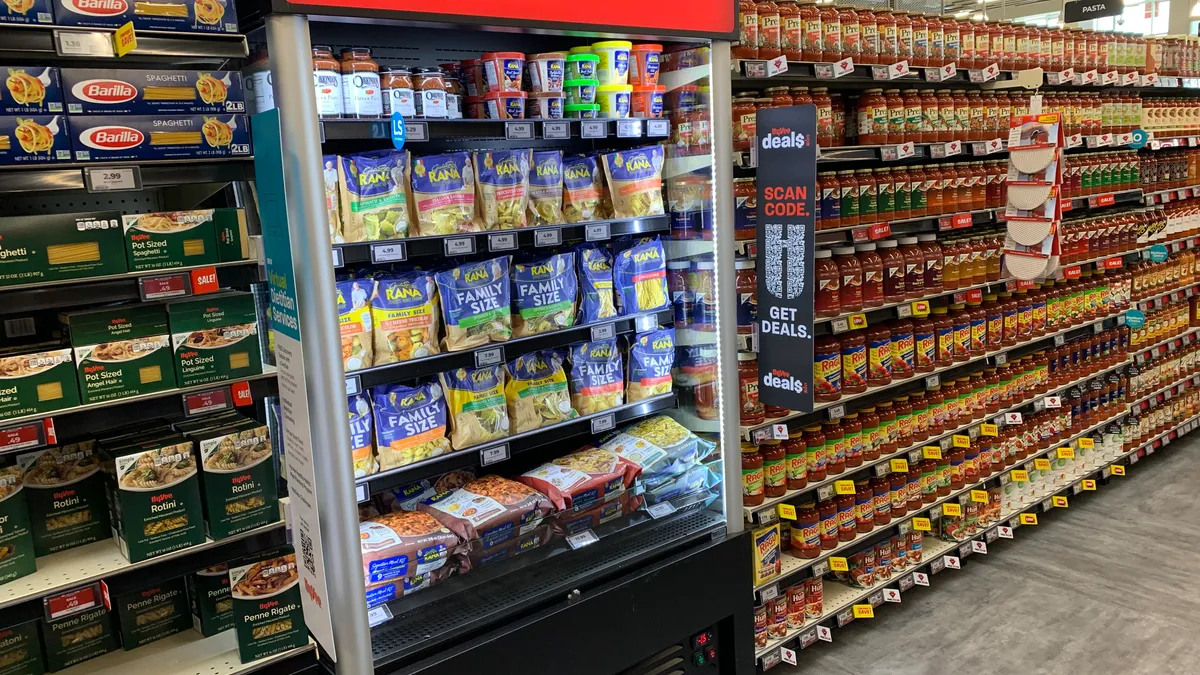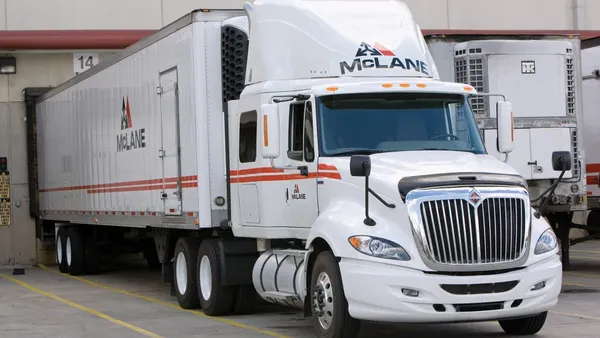Dive Brief:
- Hy-Vee has improved delivery performance and distribution efficiency by implementing multiple Manhattan Associates supply chain planning systems, according to a Nov. 6 press release.
- The regional grocery retailer reported a 3% reduction in delivery miles and a 20% increase in on-time delivery rates since integrating Mahattan’s transportation management system in 2021, according to a video statement from SVP of Distribution Matt Beenblossom.
- “The confidence that we have in our queuing now has allowed us to make adjustments with our retail window ordering, and really has allowed us to maximize the number of deliveries, the appropriate number of deliveries that are going to each of our stores,” Beenblossom said.
Dive Insight:
Hy-Vee had already been utilizing Manhattan’s warehouse management system and demand forecasting and inventory optimization platform, but the grocer still required true visibility for its entire supply chain, per Beenblossom. This need led it to incorporate the transportation management system into its technology stack.
The Midwest grocery chain utilizes a complex cross-dock network across multiple facilities, Beenblossom said, making highly accurate cubing a key to boosting visibility and ensuring efficient flow of goods from inbound receipt to outbound delivery.
“And ultimately, this solution has helped us to achieve both of those tasks and has allowed us then to service our stores in a much more efficient manner, with on-time deliveries and better fill rate,” Beenblossom said of the TMS integration.
As a grocery retailer, Hy-Vee handles many perishable products, from produce to seafood. Such items put a lot of pressure on distribution centers, said Stewart Gantt, EVP of professional services at Manhattan, in an interview with Supply Chain Dive. These facilities must be able to track expiration dates as well as weight, particularly for goods sold based on mass rather than quantity.
The improved visibility Hy-Vee has gained by integrating Manhattan’s technology platforms has allowed it to better trace the movement of these time-sensitive goods from distribution centers to stores, according to Beenblossom.













